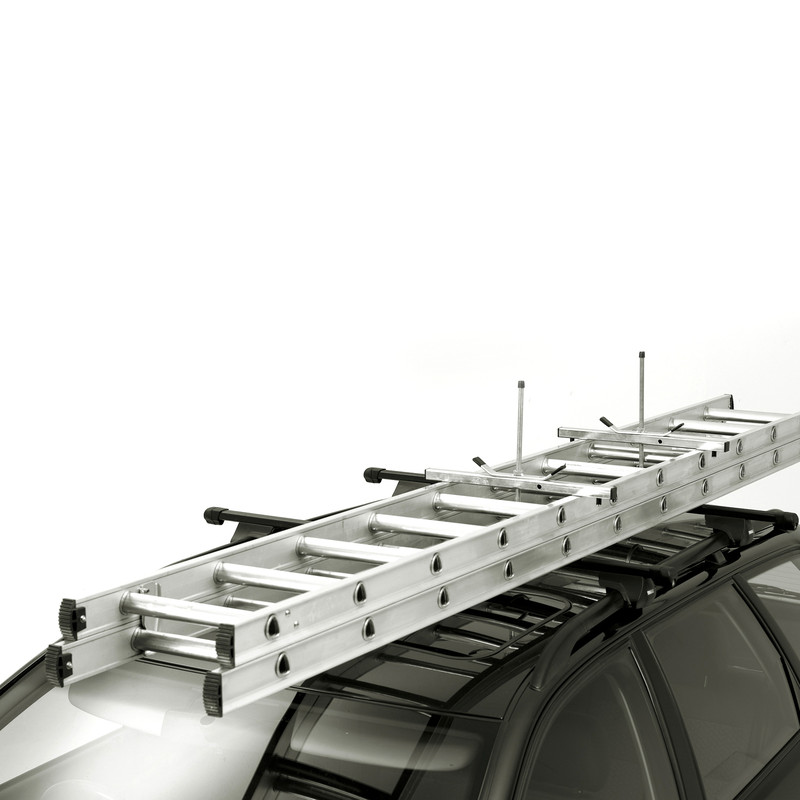A tradesperson will have to take their ladders from job to job – and securing ladders for transport has several laws that a person must abide by for the safety of not only themselves, but other road users. A ladder that is not secure on a vehicle could lead to a wide range of accidents, such as being a hazardous projectile in the event of a sudden brake.
But what are the laws concerning securing a ladder safely? This blog will go over legislation and tips for keeping your ladder safely secured, ensuring you can excel at your job and become a trusted tradesperson in your industry.
Legal Requirements and Standards for Transporting Ladders
Transportation is overseen by several regulations that were written to promote safety on the roads. The Department for transport outlines the following:
- The Road Vehicles (Construction and Use) Regulations 1986 – This determines that all loads carried on a vehicle require proper positioning. Furthermore, the act of securing ladders must be done in a way that the ladder cannot drag or fall from the vehicle, or project in a fashion that it may hit passersby.
- The Road Traffic Act 1988 – Driving any vehicle in a condition that is likely to cause harm to people with the vehicle or any loads affixed is an offence.
- Health and Safety at Work etc. Act 1974 – This act mandates employers to ensure the health and safety of all employees. If hiring a tradesperson to take ladders from A to B, the employer is charged to ensure the transportation is subject to safe travel practices. This could be anything from including a roof rack or safety ties.
- Workplace (Health, Safety and Welfare) Regulations 1992 – This act mandates a duty of care in the transportation of equipment such as ladders safely.
The consequences of non-compliance, such as the failure to secure a ladder safely, can be punished legally. Depending on the gravity of the failure, this could be anything from fines to outright prison time.
Preparing your Ladder Safely for Transport
The following are practices you should follow to always adhere to legislation and cover yourself.
- Equipment Check – Before you secure the ladder, ensure there’s been a chance to check the equipment. Ideally, the company should mandate this, but otherwise, it should be done on your own time. This is to ensure there’s no damage, like bent rails or corroded components, that could compromise ladder safety.
- Locking Mechanisms – Check the locking mechanisms are properly engaged. Locking failure could result in the ladder extending or collapsing, thereby shifting the secured system and putting yourself and other road users at risk.
Choose the Right Vehicle
The choice of vehicle should be a strong one that enables space for your ladders. For example, a pickup truck is a vehicle perfectly designed for tradespeople, allowing you to transport larger access equipment such as extension ladders with ease. The vehicle must have enough space to accommodate without the risk of front or rear overhang, and needs a stable surface to support ladders during transit.
The following additions to a vehicle should be a welcome addition to any tradesperson:
- Roof Rack – Perhaps the only feature you will need. A roof rack is specifically designed for transporting a ladder on the roof of the vehicle. The roof rack should also be tested to support the weight of the ladder. There will be side rails and tie-down points to properly secure the ladder. A ladder stabiliser can be attached to a roof rack to provide further stability.
- Securing System – Ratchet straps or rope used to tie the ladder securely to the roof rack or inside the vehicle are examples of properly securing a ladder. Test to ensure the ladder doesn’t move during movement, as this poses a risk of the ladder falling or causing damage. Furthermore, ensure that there is little to no overhanging loads.
Step-by-Step Guide to Secure Ladder
- Preparation – Do a quick check of your ladder. Ensure the ladder feet are clean to avoid slippage and position the base of the ladder close to the vehicle when lifting. Ideally, this is a two-person job, as an extra pair of hands gives better control and enhances safety.
- Lifting the Ladder – Place the ladder on the roof rack or vehicle bed. Ensure it sits securely.
- Apply securing equipment – Use ratchet straps to safely tie the ladder down to the rack or vehicle bed. Attach the straps at suitable points, preferably around the top of the ladder.
- Ensuring Visibility – If the ladder extends beyond the vehicle’s rear, apply marker boards to the overhang. This will make things more visible for other road users. If you’re doing transportation whilst it is dark, it may be a good idea to wear a hi-vis vest.
- Double-Check – A final check for added security will minimise all possible risks. This is a suitable point in the guide to have an attendant present to oversee these final checks.
Conclusion
All in all, proper preparation is ultimately what will ensure your safety on the road. Remember, so long as you’re employed by a company, it is down to them to provide the tools necessary to ensure you and other road users are safe.



